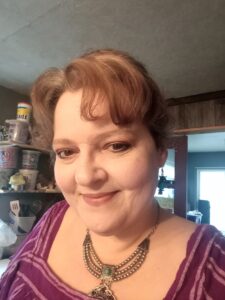The Anagama Kiln: A Unique Chance to Fire Pottery, Commune with Artists
By Niccole St. Laurent
Gary Greenberg, most often referred to as simply “Greeny” by the students and staff at Clarion University, has kept this art major tradition going for decades.
It starts with a planning meeting and prayer vigil usually held at the professor’s home.
This is a social gathering for artists and art aficionados alike. A chance to mingle, share stories, new works and just relax with like-minded people. We also get a little planning done too.
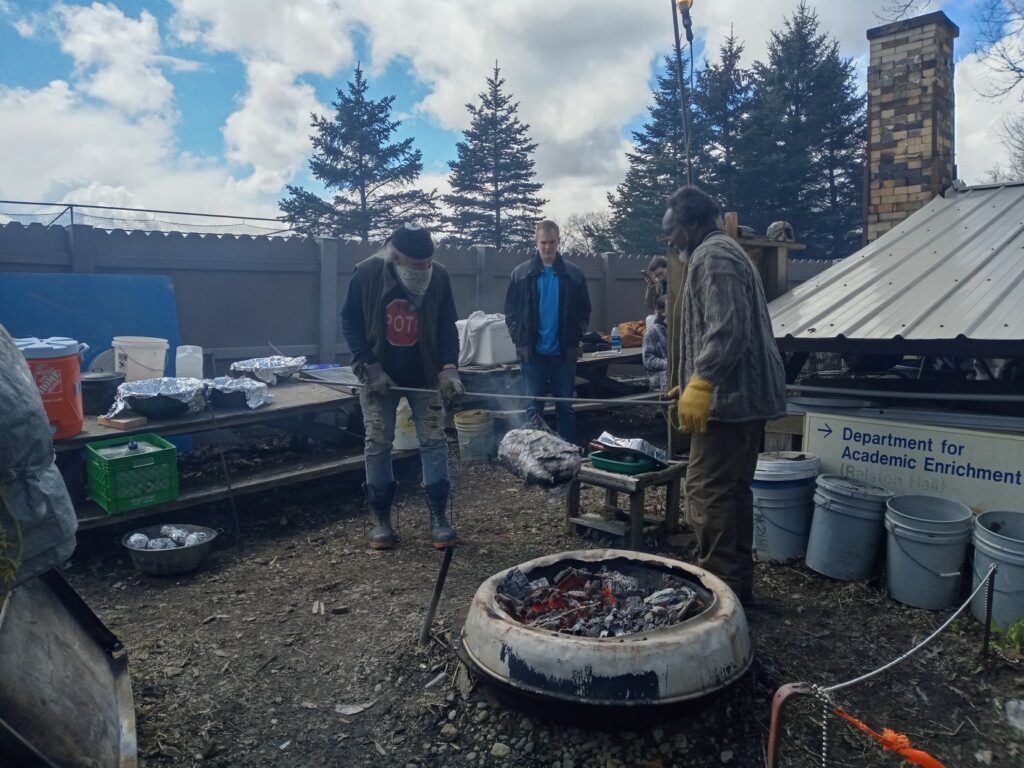
The next morning everyone converges at the ceramics studio at the university to make the wads, pack the pieces, do last minute glazing and take the hundreds of pots across town to the kiln located behind the stadium. (Wads are little balls of clay used to prevent ware from “sticking” to the shelves.)
Arriving at the kiln site has always been a thrilling time for me.
The area is now surrounded by fence so all you can see if the chimney protruding above it.
Through the gate and down the winding dirt path you catch a glimpse of the deck in front of the kiln. You notice the lower level where many stories have been told around the light of the campfire.
Then, you see it… a massive kiln built into the hillside extending through to the smokestack about 20 feet away.
Shelves begin to fill in front of it with work ready to load.
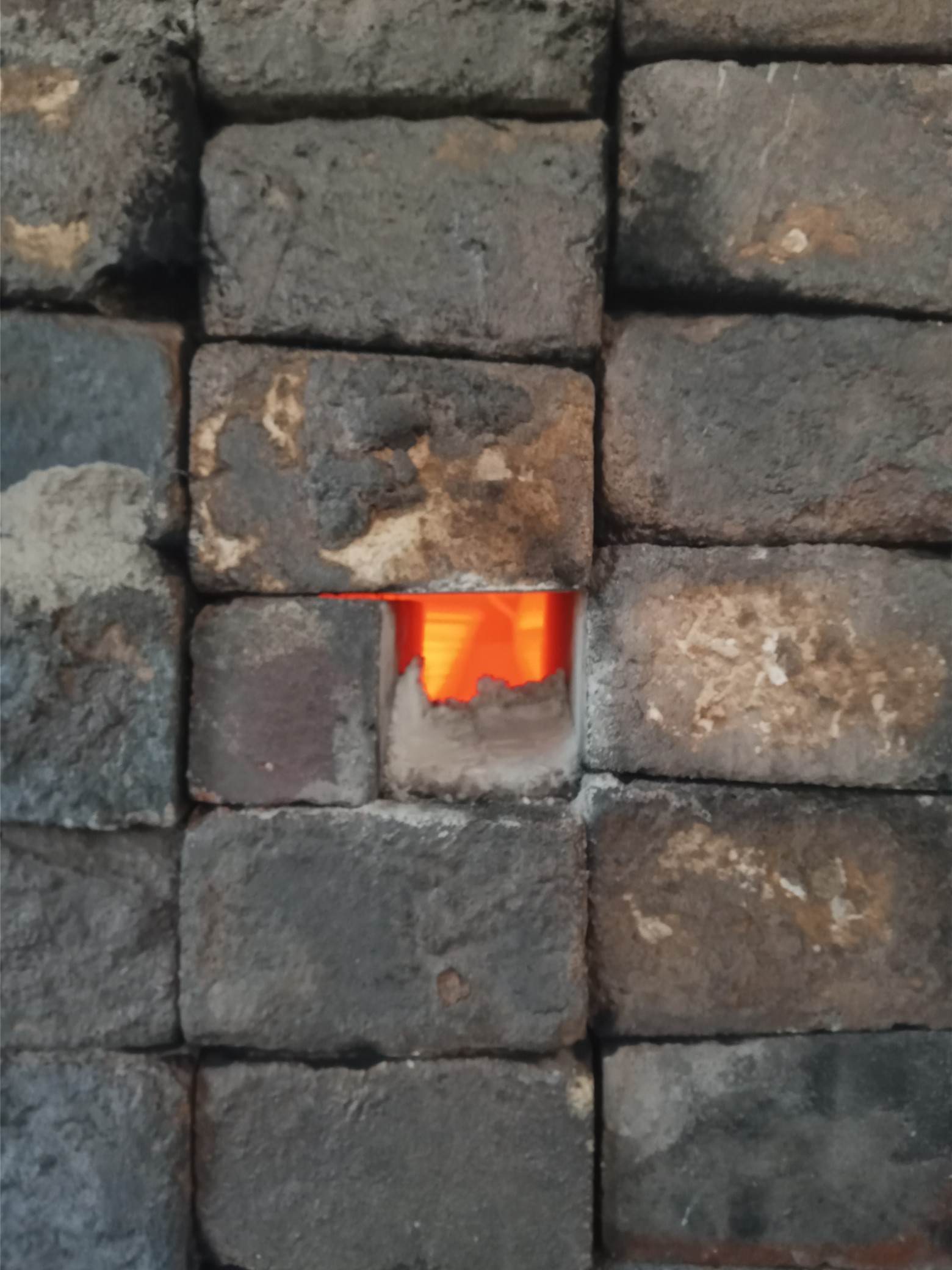
This kiln was built as an Anagama type kiln. You can read more about this unusual kiln on Wikipedia here.
This type of kiln is different from a typical gas or electric kiln that many artists are more familiar with. In the single chamber anagama kiln, the pottery pieces come into contact with ash. This gives them a unique color!
Loading takes several hours then the kiln is “lit” and the firing begins. (Lighting = building a fire within the sealed kiln.)
During the next almost three days the kiln fire is fed by volunteers, primarily students of the ceramics studio but many visiting artists from all around PA and neighboring states contribute work and stay for the firing assisting wherever needed.
For some artists like myself, it is a rare opportunity to produce pieces which have a certain “look” often sought after by artists and collectors alike.
It’s also a special time to commune with fellow clay artists, share a drink or two, etc. There is often music provided by someone who is multi talented or simply music from the radio. Workers, artists and other volunteers often bring food dishes to share with the group during their shifts.
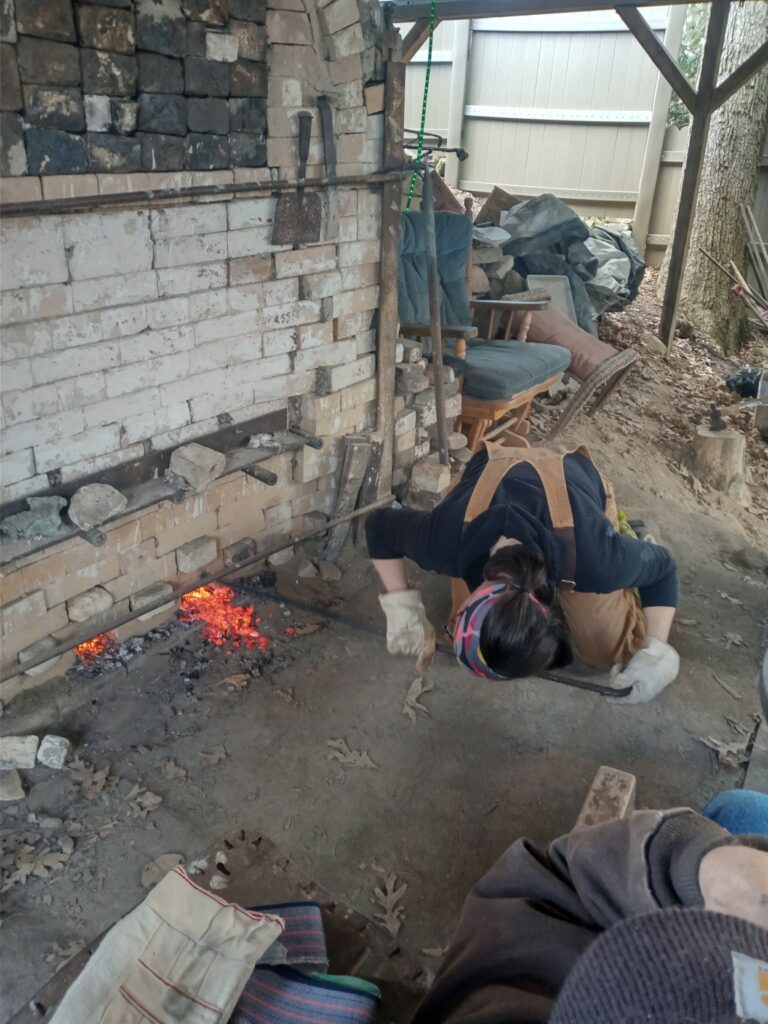
As the participants work up an appetite, Greeny will usually wrap a turkey in clay and cook it in a pit.
It’s a unique dinner experience for all of us!

It is an open air setting so in the evenings, even though the kiln is putting out a lot of heat, workers gather in front of a campfire to stay warm. Very primitive, cold and sometimes rainy but an awesome experience for anyone.
On Sunday, we all gather to share a meal by the kiln once the firing is complete. The kiln fires between cone 10 and cone 13 or 2381 – 2458 degrees Fahrenheit.
A Rare Event
This is a labor intensive method of firing which for the majority of ceramic artists and potters they simply do not have the manpower or time to do. It’s what makes this event so very rare and special to everyone.
The wood firing takes place twice per year, spring and fall.
The Finished Pieces
After the kiln had fired the pottery for nearly three days with constant heat from a wood fire, it was finally time for the artists to collect their work!
Each artist was eager to see how the kiln had transformed their pottery.
When the kiln was cool, volunteers collected the pieces from inside the anagama kiln and set them aside for each artist to pick up.
Because a wood-fired anagama kiln is rare and different than what most potters use in their day-to-day work, everyone was anxious to see if their pieces looked how they expected them to.
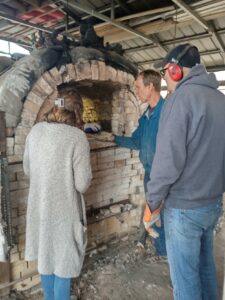
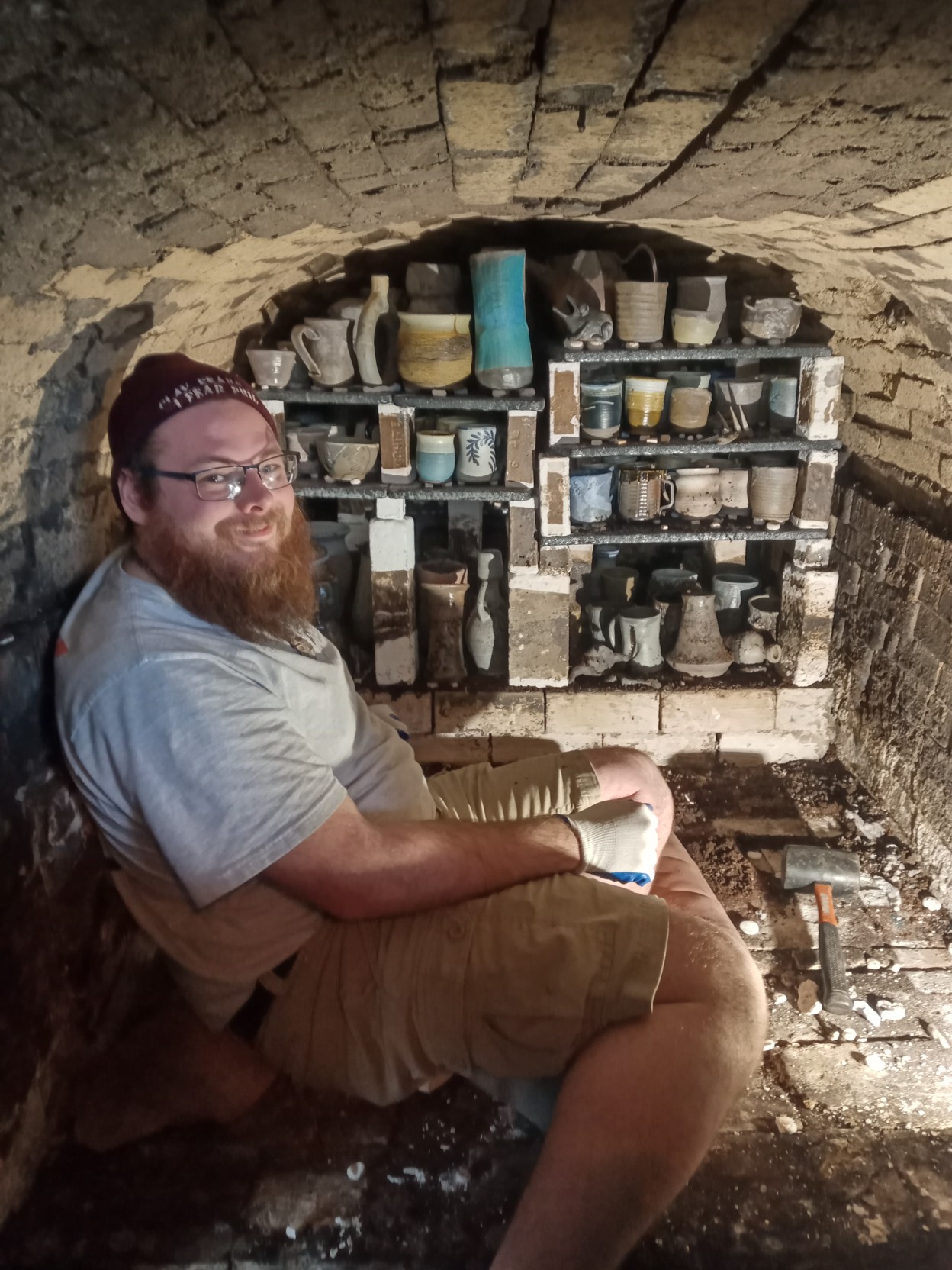
A Unique Color
An anagama kiln is one single chamber, so the pottery comes into direct contact with ash. This gives it a unique color, and no two pieces can ever be exactly the same.
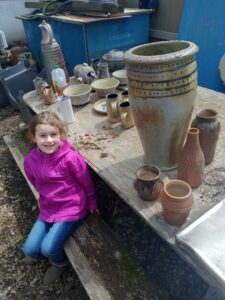
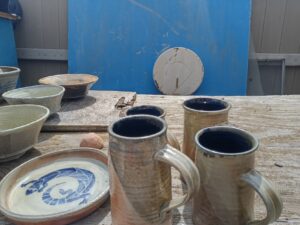
Experience the Anagama Kiln
For more information or to participate, please call Greeny (Gary Greenberg) at Clarion University. He is listed in the directory of professors here or email greenber@clarion.edu.
You don’t have to be an artist to appreciate such an incredible experience!
About the Author
Niccole St. Laurent is a professional potter, living and creating her pottery in Reynoldsville, PA.
From functional pieces you can use every day to art pieces you can treasure or gift, Niccole strives to produce pottery for everyone. She has been a potter since the mid 90’s beginning with formal education in the arts at Clarion University. Niccole’s studio and showroom opened July 2020. She specializes in functional pottery but also produces gallery art pottery pieces using a variety of techniques. Niccole’s main focus is Pennsylvania’s indigenous flora and fauna.
Visit www.stlaurentpottery.com to see Nicole’s work or call 814-612-2020 for more information.
